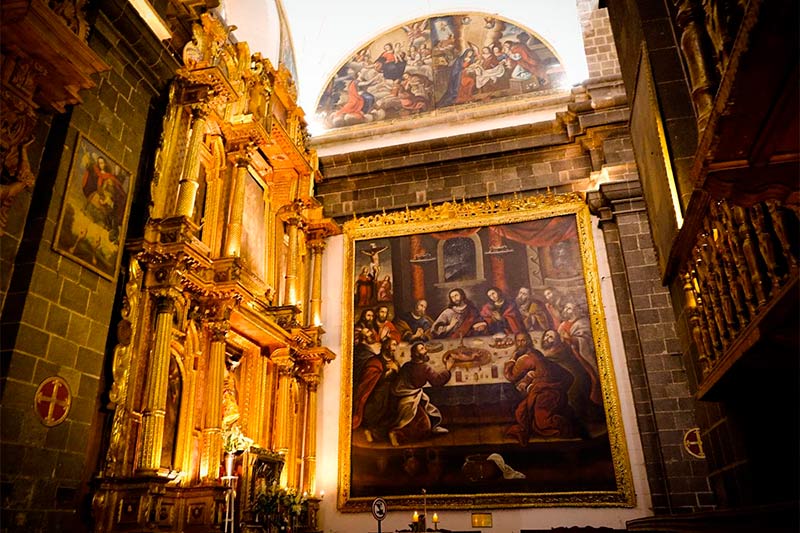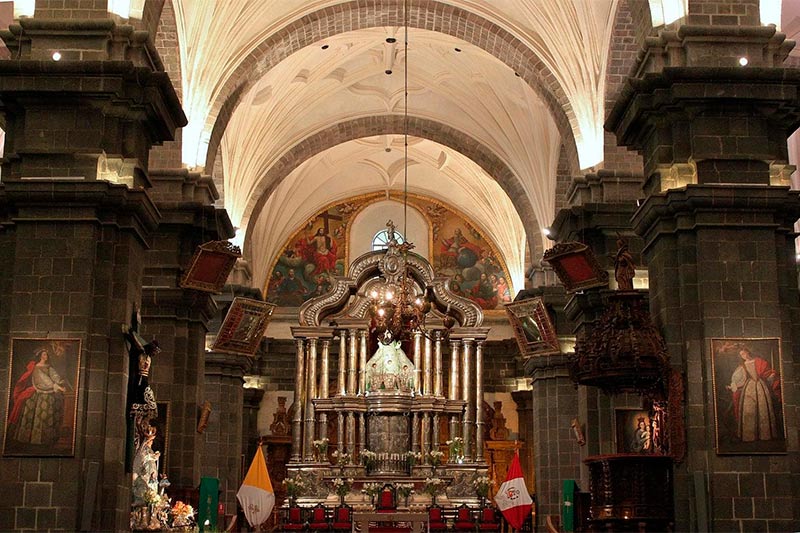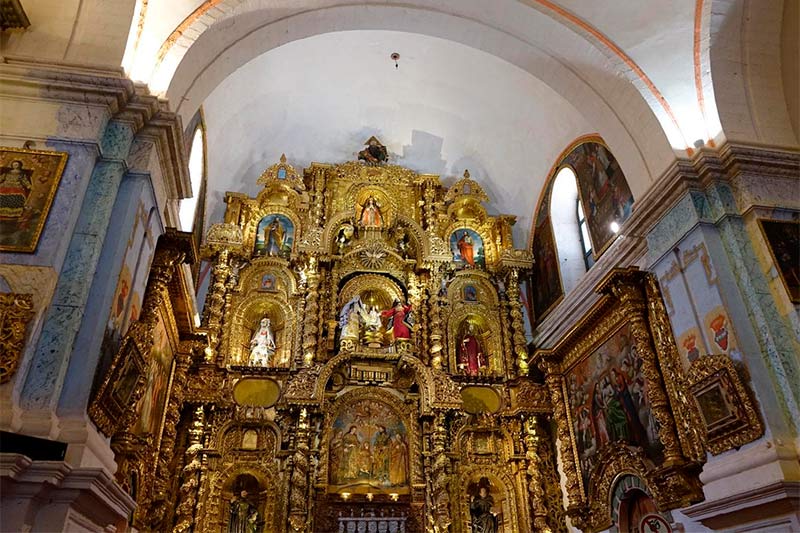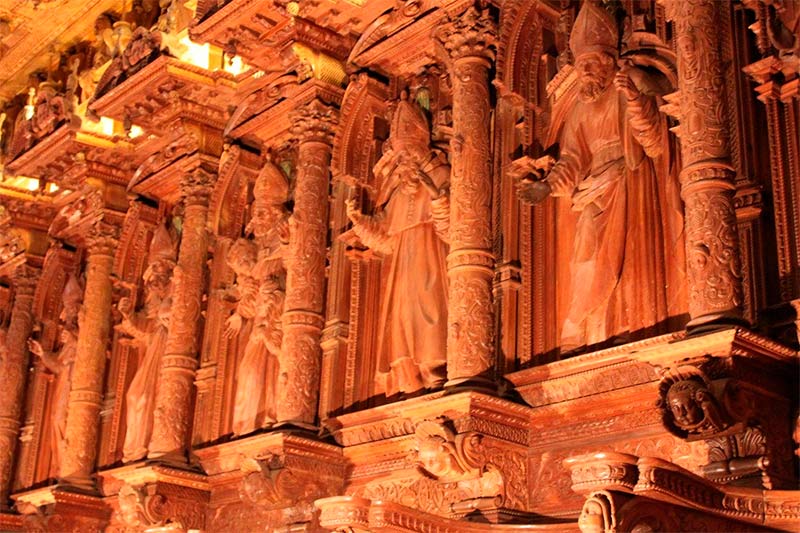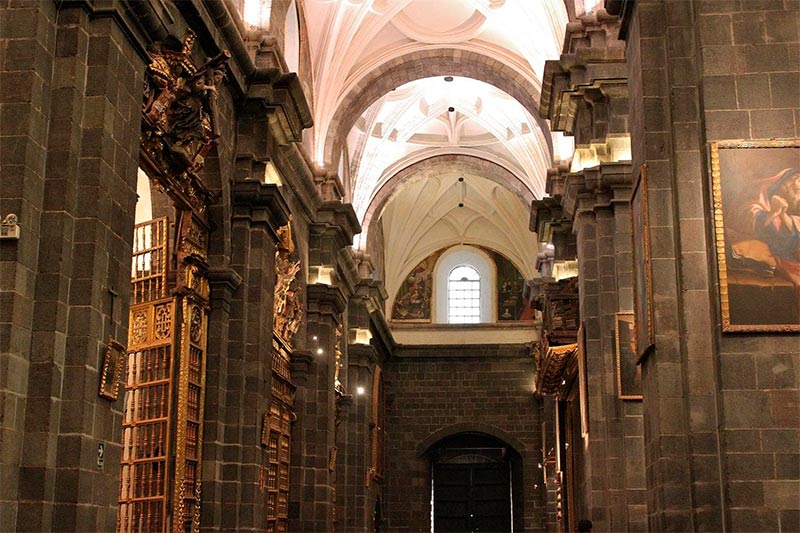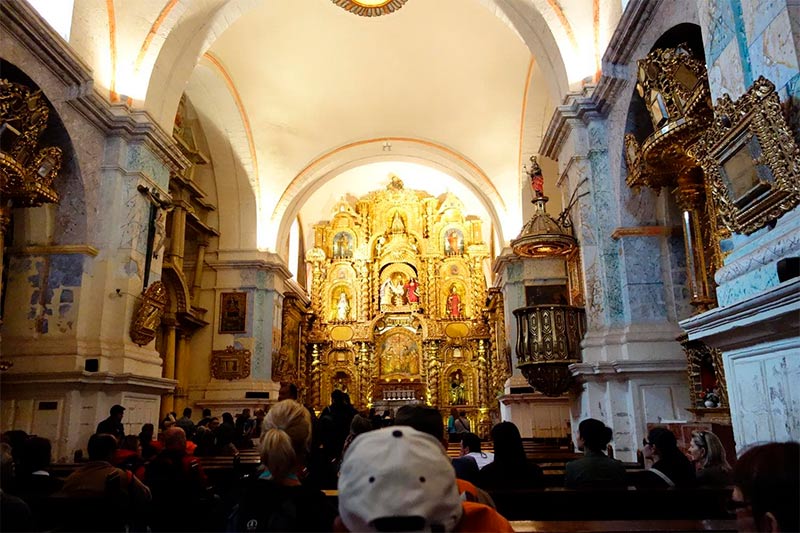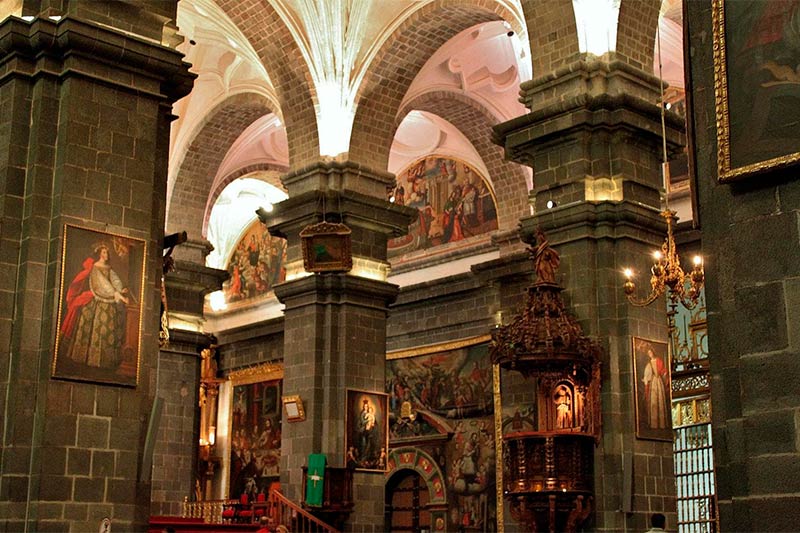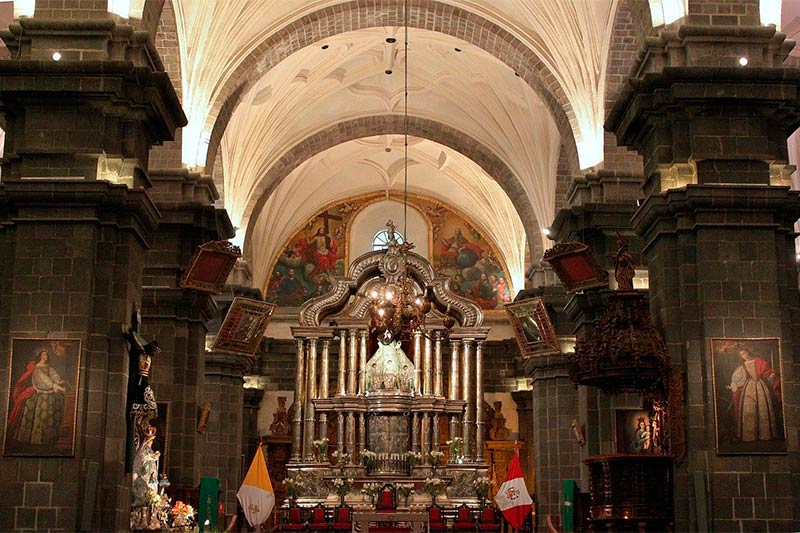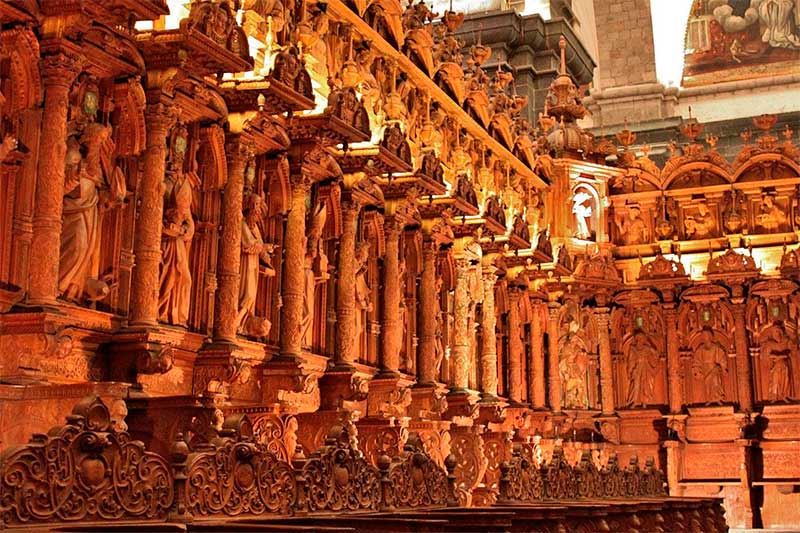The Cathedral of Cusco
The Cathedral is one of the most famous tourist attractions in Cusco. Its colonial architecture is photographed by almost all visitors who come to the Main Square. Inside, the temple boasts paintings, murals, sculptures and a collection of valuable treasures and antiques. It is not one of the largest art repositories in the city. Admission has a cost of 40 Peruvian soles. It is also part of the famous ‘City tour’ around Cuzco.
- This is the Cathedral from the outside!
- Location
- Cathedral Division
- Map of the Cathedral of Cusco
- What to see?
- Entrance fee
- Visiting hours
- Visit regulations
- Photos of the interior of the Cathedral of Cusco
- Frequent questions
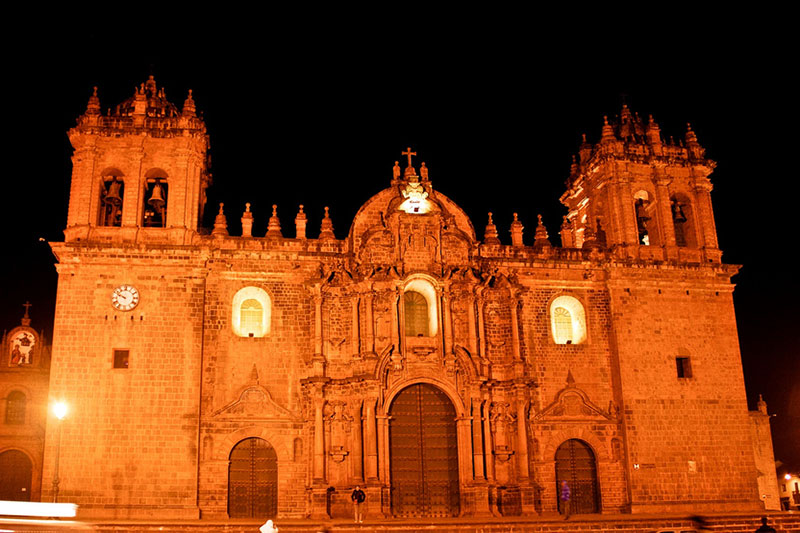
Cusco cathedral
Location
- The Cathedral of Cusco is located on the north side of the Main Square, in the historic center of the city.
Cathedral Division
- The Cathedral of Cusco is divided into three temples: the church of El Triunfo (1536), the oldest, the temple of the Sagrada Familia (1723) and the Basilica Cathedral of Cusco (1560).
Map of the Cathedral of Cusco
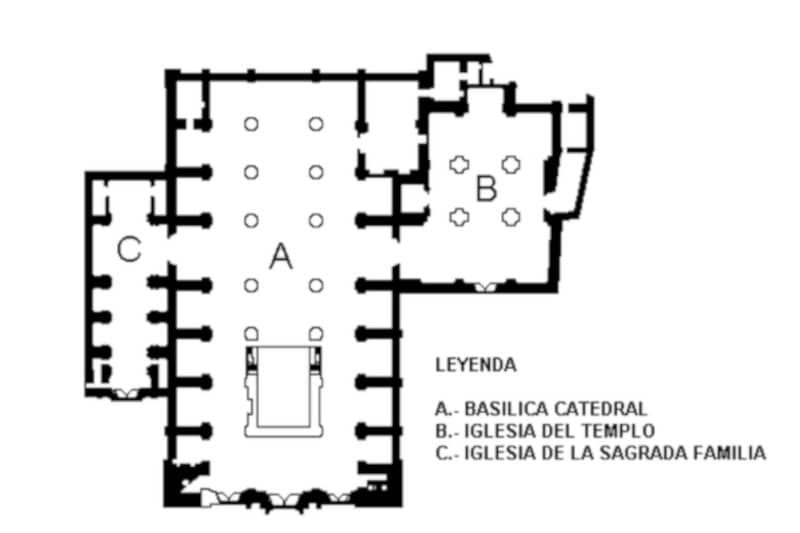
What to see?
Crypts – Below the high altar you will find a small arched crypt. This contains the ashes of many deceased archbishops from Cusco. It should be noted that in the church of El Triunfo the crypt is exhibited where the remains of the Inca chronicler Garcilaso de la Vega (author of ‘The royal comments of the Incas’) rest. The crypt has a portion of the ashes of the Cusco writer. The other half is in Spain.
The Silver Room – This section of the church is also known as ‘The Silver Room.’ It is a small side chapel that contains a varied collection of religious objects made of precious stones, gold and, above all, silver. Among these objects you will find an embossed silver coffin used to carry the statue of the ‘Lord of Tremors’. Another element is a large trellis that is used during the famous celebration of ‘Corpus Christi’ that weighs up to 160 kilos.
The painting of the Last Supper – The walls of the Cathedral are full of paintings from the famous Cusco school of painting, which originated during the colonial era. ‘The Last Supper’ stands out, a work by the Cusco master Marcos Zapata. It measures 5 x 4 meters. The painting replaces some characteristics of the original work with Andean customs and beliefs, such as the vizcacha. This Andean rodent was considered the guardian of the lakes and mountains.
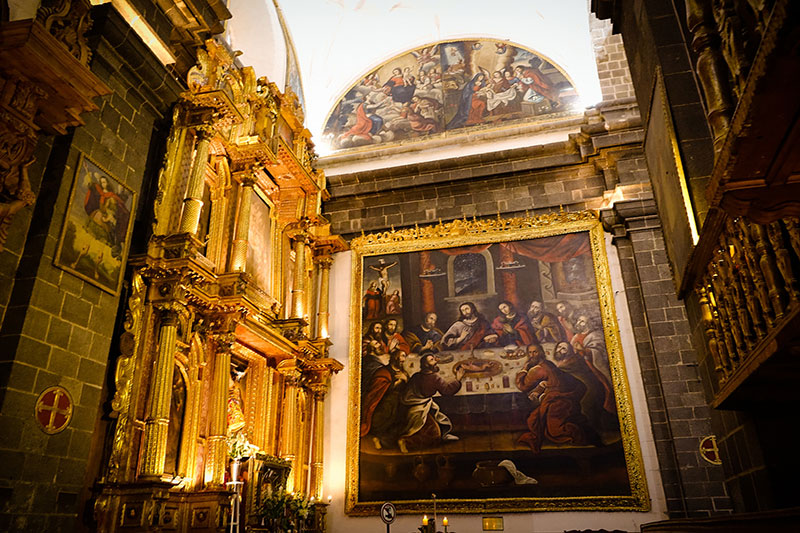
Painting of the Last Supper
Choir stalls – The choir stalls are one of the most famous attractions of the Cathedral. It is located in the lower part of the central nave. It is made of pure cedar, in the ‘neo-archaic’ style, which was the style used in Spain between the 15th and 17th centuries. The stalls are formed on three sides: by double-row stalls on the sides and a single row in the central piece. The backrests attached to the walls with semi-relief carvings with figures of saints stand out.
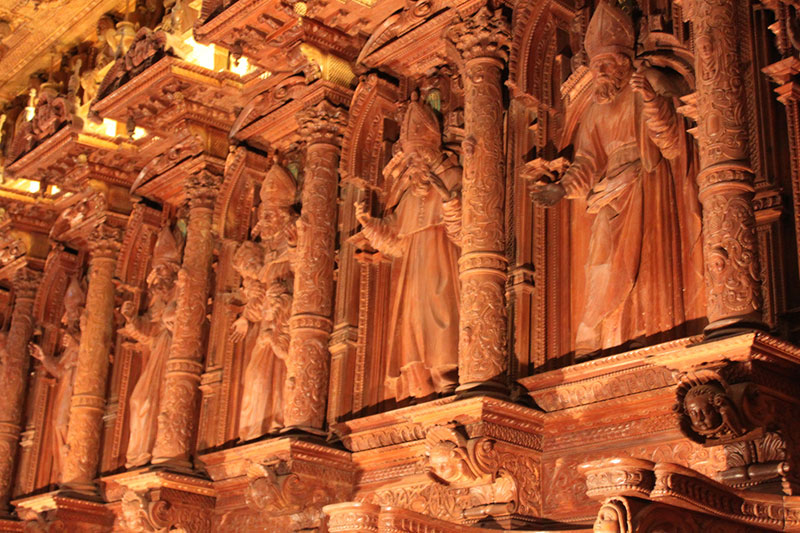
Portraits of the previous bishops of Cusco
The Lord of Tremors – The statue of a crucified dark Christ is an emblem of the Cathedral as well as of Christianity in Peru. An ancient legend tells that when the statue was transferred from Europe to Peru, a fierce storm threatened the lives of the people on board the ship. The desperation before an imminent death caused the crew to put the statue on its feet. Instantly, the storm ended. Another legend tells that, after the devastating earthquake of 1650, the statue caused the aftershocks to stop. For all these reasons, he became the main religious figure in the city of Cusco.
The sacristy – The sacristy is one of the most outstanding rooms in the Cathedral. It is located on the right side of the main altar. Its walls are dominated by the portraits of all the bishops of Cusco, from Vicente de Valverde (1499 – 1541) to the most recent bishops. Among the other treasures in this room, the ‘Christ of the agony’ stands out, a huge carved cedar altarpiece, which stands out for its realism, expressiveness and fine workmanship.
One of the most valuable treasures of the Cathedral of Cusco is a monstrance full of precious materials, such as: 43 topazes, 17 diamonds, 221 emeralds, 263 diamonds, 1 agate, 5 sapphires, 89 amethysts, 62 rubies, and 331 pearls. This work was donated by Bishop Pedro Marcillo Rubio de Auñón and was made by the artist Gregorio Gallegos in 1745. It weighs 27 kilos and is 1.20 meters tall.
Entrance fee
- Foreign adults: 40 Peruvian soles (12 USD approximately).
- Foreign children: 20 Peruvian soles (6 USD approximately).
- Foreign students (with ISIC card): 20 Peruvian soles (6 USD approximately).
Visiting hours
- Monday to Sunday, from 10 in the morning to 6 in the afternoon.
Visit regulations
- Keep quiet inside the church.
- Do not touch the artwork.
- Photographs and videos are not allowed inside the church.
Frequent questions
a) How long did the construction of the Cathedral take?
The construction of the main architecture began in 1560 and ended in 1654, after almost a century of work, interrupted by the 1650 earthquake (which affected the ribbed vault).
b) Where to buy the ticket?
The entrance ticket can be purchased at the entrance door of the Cathedral. You can also buy the Ticket for the Religious Circuit of Cusco, which includes a visit to the Cathedral as well as the Temple of San Blas, the Temple of San Cristóbal and the Archbishop’s Museum. In this last temple you can buy the ticket.
c) Can I get in for free?
Yes. One way to visit the church for free is to enter during mass hours, which takes place on Saturdays and Sundays at 7 in the morning and 7 at night.
d) How to get a tour guide?
At the entrance door there are people who offer their services as official tourist guides, in exchange for a payment. A more practical way is to book a ‘City Tour Cusco’ which includes a visit to the Cathedral as well as the tour guide service.
e) On what special date to visit the Cathedral?
Corpus Christi is the most important religious festival in Cusco. The 15 main sculptures of saints and virgins of the city are carried in procession to the Cathedral in the midst of music, dance and typical dishes. It is celebrated every year, on the Thursday following the day of the Holy Trinity (June).
f) Can I visit the Cathedral with a ‘City tour’?
Yes. The Cathedral of Cusco is included in the ‘City tour’, which also offers the visit to the Coricancha, Sacsayhuaman, Qenqo, Pucapucara and Tambomachay. All services offer tickets, transportation and tour guide.
g) What other churches to visit in Cusco?
The city of Cusco has dozens of colonial temples full of history and treasures. In addition to the Cathedral, tourists can visit: the church of the Society of Jesus, the church and convent of Santo Domingo, the church and convent of La Merced, the church and convent of San Francisco and others. You can buy entrance tickets at the church doors.
h) What is the most famous sculpture of the Cathedral of Cusco?
The statue of the Lord of tremors (a crucified Christ in brown) is considered the most famous sculpture in the Cathedral. Every Holy Monday this figure is paraded in procession through the streets of the city. He is considered the ‘Sworn Patron of Cusco’.
i) Can I do the Cusco City Tour without visiting the Cathedral?
Yes, many City Tours of Cusco do not include the visit to the Cathedral due to the high price of the entrance ticket (40 Peruvian soles). That is why the City Tour includes the visit to: Coricancha, Sacsayhuaman, Qenqo, Pucapucara and Tambomachay.
Advice from people who have been there
 By: Megan L.
By: Megan L.“Beautiful cathedral“
“The most beautiful church I have visited in my life, Its colonial architecture, with lavish altars, beautiful carvings in cedar wood. To visit it with a guide is worth it. It is impressive and beautiful…“
By Ticket Machu Picchu – Last updated, October 6, 2022
